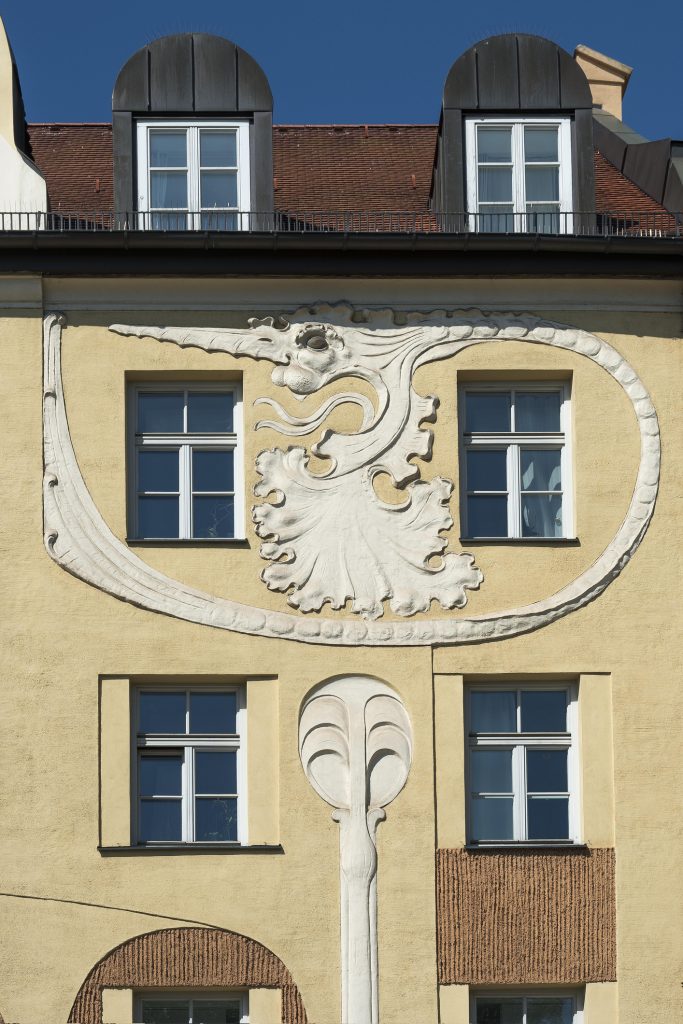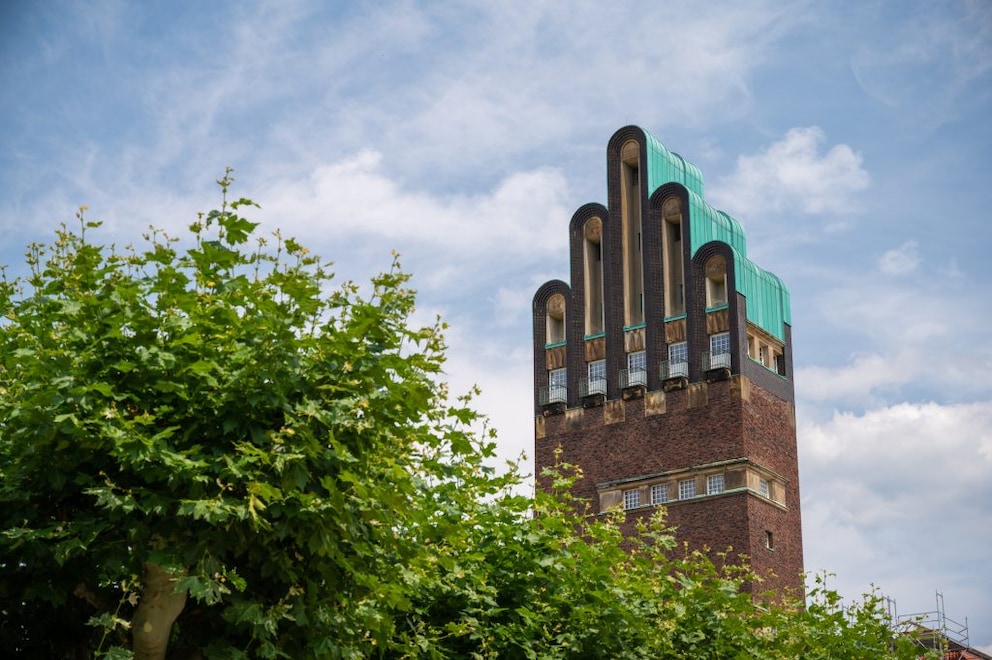March 25, 2023, 11:39 am | Read time: 5 minutes
The Art Nouveau movement lasted only a few years, yet it significantly influenced art history. With a strong reformist spirit and even more ornamentation, the movement ushered in a significant transformation in the architecture and art scene. Today, Art Nouveau buildings are considered important cultural heritage.
In this country, it’s referred to as Art Nouveau, named after the cultural magazine “Die Jugend,” founded in Munich in 1896. This significant art historical era around the turn of the century was primarily inspired by new international movements considered avant-garde and multifaceted. These included the French-Belgian “Art Nouveau,” the British “Arts and Crafts Movement,” and the Austrian “Secession Style.” Historically, this style period, which lasted from about 1890 until the start of World War I in 1914, had a flourishing period of just 20 years, yet Art Nouveau is still known today and lives on in numerous buildings and structures.
Art Nouveau–An Era of New Art
As misleading as the name Art Nouveau is, it was equally relevant for a transformation in the art and architecture scene. Moreover, the new endeavors were understood as a kind of reform style. Artists of the time consciously broke with conventions and decisively rejected bourgeois attitudes. Instead of continuing to imitate historical styles, they wanted to focus on new modern, but above all, natural motifs. Therefore, the scene often referred to it as the “new style”–the term Art Nouveau only solidified over time.
With Expressive Ornaments Against Rapid Industrialization
A hallmark of Art Nouveau was its understanding of an object as a total work of art. Especially in architecture, artists were concerned not only with the exterior of a building but also with ensuring that the interior matched the style of the facade. Furthermore, the function of a building was to be expressed through its design. For this reason, practical aspects met with a wealth of playful ornaments.
https://oembed/myhomebook/affiliate/f2735f0838d66cdc6aafb2692ba3d543cccc8b3f7487d96baeb9791d9644dd2c/8e6e2b30-0677-421d-83d2-e1e4481878f8/embed
Since nature served as a muse, Art Nouveau primarily speaks an organic, flowing language with many curved lines, waves, tendrils, and other plant forms. The artists of the time saw this as a response to the rapidly developing industrialization.
The Defining Attributes of Art Nouveau
Art Nouveau artists aimed to overturn and redesign everything prevailing in art and architecture in their reformist efforts. New colors, new shapes, new patterns, all while staying close to nature. Aesthetics met melancholy, delicate lines met expansive flourishes, floral motifs met animal motifs.

Instead of strict symmetry and axial divisions, floral decor set the stylistic tone. Additionally, the swan, with all its grace and elegance, became one of the most defining motifs of Art Nouveau. As a result, such designs were always richly adorned and decorated.
These distinctive attributes make Art Nouveau easily recognizable on the facades of buildings, in the interior design of homes, and in crafts such as ceramics, jewelry, and mosaics. In art, women were often depicted in brightly colored garments with flowing hair adorned with detailed floral decorations.
Famous Art Nouveau Artists
As brief as the Art Nouveau era was, it produced many significant artists:
- Henry van de Velde
- Peter Behrens
- Gustav Klimt
- Antonio Gaudí
- Joseph Maria Olbrich
- Otto Wagner
- Louis Comfort Tiffany
- Richard Riemerschmid
- Bernhard Pankok
Famous Art Nouveau Buildings
To this day, numerous national and international buildings from the Art Nouveau period are well-preserved and uniquely shape the urban landscape:
- La Sagrada Familia in Barcelona
- Casa Batlló in Barcelona
- Metro Porte Dauphine in Paris
- The Hackesche Höfe in Berlin
- Secession Building in Vienna
- Art School in Weimar
- Villa Esche in Chemnitz
- Müllersches Volksbad in Munich
- Mathildenhöhe in Darmstadt
- State Theater in Cottbus
- Augsburg Synagogue
On the Path to Objectivity

In 1898, Elector Ernst Ludwig of Hesse-Darmstadt founded the artists’ colony on the Mathildenhöhe as another center for Art Nouveau. Austrian architect and designer Joseph Maria Olbrich, who had previously created the Secession Building in Vienna, came to Darmstadt and built an art studio and other structures for the upcoming colony exhibition “A Document of German Art” in the summer of 1901. Architect and painter Peter Behrens was also involved in this project.
Gradually, a shift occurred: From the former avant-garde art, Art Nouveau took on increasingly bourgeois characteristics, for which the exhibition not only attracted worldwide attention but also faced strong criticism. Soon, some artists began to focus on more sobriety in their form language. Instead of the typical flourishes, a move toward objectivity in their works became apparent. A split loomed, as artists like Peter Behrens and Richard Riemerschmid became increasingly interested in serial production, which, however, clearly contradicted the core idea of Art Nouveau.
Also of interest: How the Masters of the Renaissance Influenced Today’s Architecture

What characterizes an apartment from the Gründerzeit era?

How the Biedermeier Era Shaped Architecture and Furniture Design

What Makes Louis XVI Style Furniture So Special Today?
The End of Art Nouveau
In 1906, the Third German Arts and Crafts Exhibition took place in Dresden, with numerous Art Nouveau representatives participating. Subsequently, in 1907, the German Werkbund was founded under the chairmanship of architect, design activist, and writer Hermann Muthesius, who advocated for a new direction of the style with a shift toward more objectivity and simplicity. From then on, art, craft, and industry were to be more interconnected.
Thus, Art Nouveau developed into a precursor of the New Objectivity of the 1920s. However, before that, in 1914, the so-called Werkbund dispute occurred between Hermann Muthesius and Henry van de Velde. The latter supported the stylistic development of crafts free from industrial interests. However, things turned out differently: Serial production became an essential part of art, and Art Nouveau soon experienced its abrupt end. It wasn’t until long after World War II that it gained more recognition and appreciation again.


